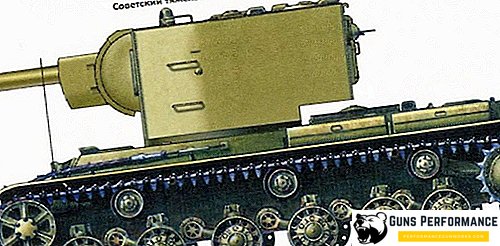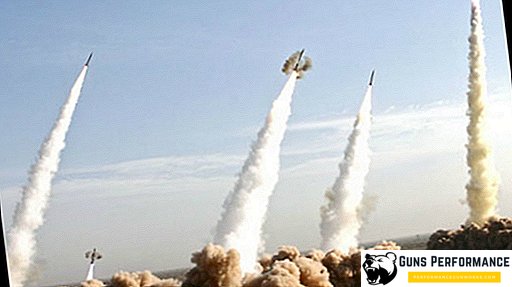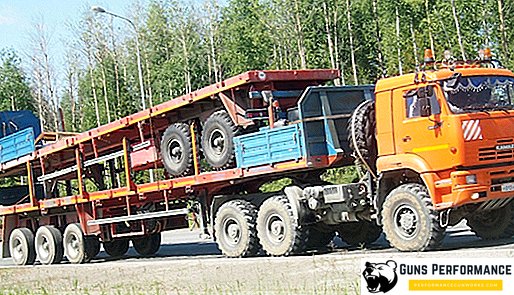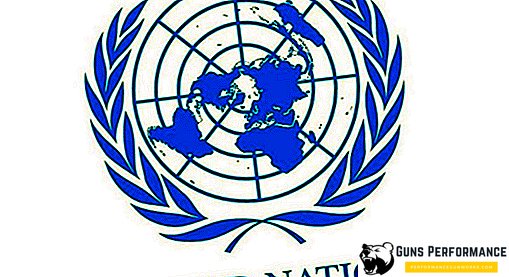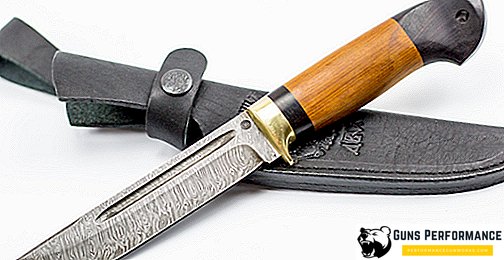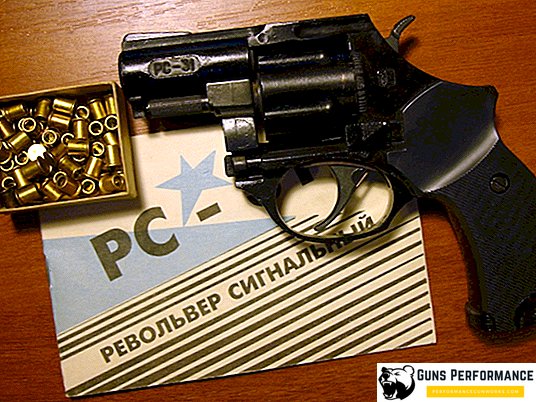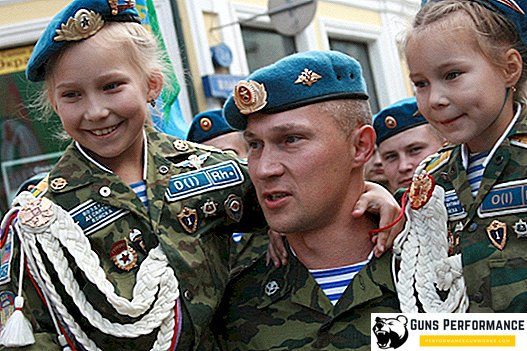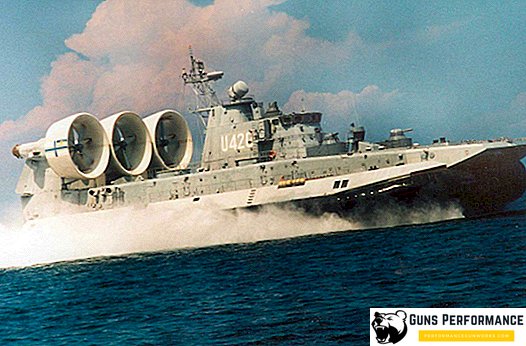The period before the Second World War in the world can not be called calm. The tension was increasing every day. At the same time, the 1930s were characterized by a series of military conflicts that became a full-fledged “reconnaissance battle” for the opposing sides. Among these conflicts are the Soviet-Finnish war, the war in China and, of course, the civil war in Spain.
Background conflict
The first half of the 20th century for Spain was a very tense period. The country entered the 20th century as a backward agrarian state, in which progressive reforms were inhibited in every way. At the same time growing discontent of the people. Army affairs were also deplorable: soldiers and commanders were trained under outdated programs and had outdated weapons.
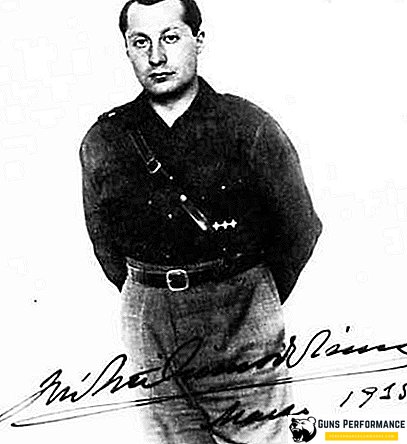
In 1923, a military coup took place in Spain, headed by General Miguel Primo de Rivera. Thanks to his energetic efforts, a number of reforms were carried out in the country, which allowed her to start developing. In this case, the reforms were modeled on those that were carried out in Italy by the Nazis. However, in the late 1920s, Spain was hit by a wave of global crisis, with the result that the Primo de Rivera government fell.
Already in 1931, the socialists and liberals won the parliamentary elections in the country, which led to the speedy and regular abolition of the monarchy. The reforms began, which, however, were not always consistent and successful. Representatives of the clergy and just people of right-wing political views were persecuted, which by 1936 had split the Spanish society and the army into two camps. The situation gradually deteriorated, and by July 1936, chaos had actually begun in the country. He was provoked by inconsistent agrarian reform and caused riots and murders of priests and aristocrats.
The beginning of the war (July 1936)

On July 16, 1936, a rebellion broke out in the Moroccan colonies of Spain, and by the 20th the Spanish Morocco was completely in the hands of the rebels. At the same time, rebellions broke out in other colonies: Western Sahara, Spanish Guinea and the Canary Islands. Two days later, the insurgency began in the mainland. So, on July 18, fighting began in Seville, which was soon enough taken by the rebels. Cadiz and a number of other cities were also occupied in the south, which allowed the rebels to supply troops here, as well as to have a powerful foothold in southern Spain.

In the north, a rebellion broke out in Oviedo, Burgos and other cities. At the same time, during the first week, the areas under the control of the rebels were enclaves that gradually united with each other, creating a solid front. The main part of the army took the side of the rebels, from the very first days of the insurgency, putting the republican government in a difficult position. The majority of the rebels were nationalists and other right-wing forces.
In addition to a number of failed uprisings in the major cities of Spain, the rebels in the first days of the war lost their leader, José Sanhurho, who was killed in a plane crash. As a result of complex political processes in October 1936, General Francisco Franco Baamonde became the leader of the rebels.
The war broke out (July 1936 - March 1938)

Successfully suppressing a number of riots in major Spanish cities, the republic faced a lot of difficulties. The main one was the almost complete absence of the army, which forced the formation of the Armed Forces anew. At the same time, at the end of July, Great Britain and France, and previously treated the republic with suspicion, imposed an embargo on arms supplies to it. However, assistance to the nationalists came from Portugal, Germany and Italy. Weapons, military equipment and even squadrons were supplied with the crews.
The leadership of the USSR also decided to assist the Spanish Republic, since in the future it was possible to get an ally with a very favorable strategic position. The Soviet Union also began to send in Spain, ammunition, weapons, medicines, military equipment, aircraft, and even volunteers and military personnel who became the backbone of the "international" brigades, recruited from citizens of many countries. Thus, the conflict in Spain has become truly multinational. Spain has become a testing ground for doctrines and military equipment for Italy, Germany and the Soviet Union.
During the fierce fighting in August-September 1936, the nationalists managed to establish a land connection between their bridgeheads in Andalusia (in southern Spain) and Old Castile (north of the country). At the same time, part of the territory in the north was in the hands of the Republicans.
On October 15, 1936, the nationalists launched an offensive against Madrid, which they had been preparing since August. Troops under the command of General Mola and the African Army under the command of General Franco attacked here. It was planned to seize the city with a powerful throw and then "cut" the territory of the Republicans into two parts, finally disorganizing their resistance.
However, the attack, which began very successfully, soon choked, not least thanks to Soviet tank power. The stubborn defense of Madrid began, continuing until the very end of the war. However, the Republican government of Spain left the city and moved to Valencia. The defense of the capital was entrusted to the Junta of Madrid defense.
After the battles for Madrid came the stage of the winter campaign of 1936/37, during which both sides attempted an offensive. In particular, the Republicans tried to attack on the Central Front, but, having suffered serious losses, failed. At the same time, the nationalists were able to seize the whole of Andalusia, which was held by poorly trained and poorly armed detachments of the republican militia. In general, the result of the winter campaign can be called a draw, as the front line has stabilized, and there have been no significant changes over the period.
However, at the same time, the situation of countries was changing, and in different directions. Anarchy actually reigned in the republic, and the Spanish industry, the bulk of which was in the hands of the Republicans, gave almost nothing to the front, being controlled by trade union organizations and cells. The heavy losses incurred in the battles for Madrid caused a decrease in the scale of actions of the republican forces in subsequent campaigns.
The nationalists rather quickly managed to recover from the defeat at Madrid. Having mobilized, they managed to replenish the ranks of their army, and by the spring of 1937 they were again ready for active hostilities.
The goal of the 1937 campaign was the north of Spain, namely the Basque Country, Cantabria and Asturias, which by that time were actually separate states, nominally allied republican government. Quite serious industrial capacities were concentrated on the territory of these countries, which made this region very, very attractive for the strike of the nationalists.

The defense of the republican and allied forces here was very scarce, since the Northern Front was considered secondary. However, there was a line of fortifications here, equipped in the winter of 1936/37.
Nationalists had not only numerical superiority - about 50 thousand people against 30 - but also complete superiority in the air, which in the first days of the operation caused many barbaric destruction of the Basque cities. Thus, on April 26, 1937, the Spanish city of Guernica was erased from the face of the earth, becoming a symbol of barbarism and savagery of the Franco and German pilots, who did not stop at anything for the achievement of military goals.
At the same time, on April 28, an uprising of the Trotskyists began in Catalonia, planning to take power in the country in the conditions of a protracted war. As a result, a powerful political crisis shook the republic, resulting in street fighting in Barcelona, Lleida and other cities, and in fact disrupting the Republicans' upcoming attack on Zaragoza. In addition to the aggravation of the situation inside the republic, the uprising finally put an end to the retention of the Basque Country, which was defeated and seized by the nationalists by June 20.
The result of the spring battles was not only the defeat of the republican army, but also a partial change of government of the Spanish Republic: instead of Largo Caballero, the chairman of the government of Spain was Juan Negrin. Changed and many ministers. The main consequence of the political crisis, which lasted until July 1937, was the drop in morale among the international brigades; however, many fighters were disappointed in the ideas for which they were going to fight. For the nationalists, Franco finally strengthened his dictatorship, eliminating his main political opponents.

In July 1937, the Republican leadership planned an attack on the town of Brunete, near Madrid. It was planned to crush the forces of the nationalists and throw them away from the capital.
The beginning of the offensive was very successful for the Republicans. They managed to capture the town of Brunete and discard the nationalists for 10-15 km. But then the nationalists, having received reinforcements, launched a counter-offensive, which was unexpected for the republican forces. As a result, the Francois threw the enemy back to the starting lines, inflicting huge losses on him.
In mid-August 1937, the nationalists launched an offensive in Cantabria. Here the republican forces held a small bridgehead with the center in Santander, surrounded on all sides by the enemy. Already on the first day of the offensive, the position of the Republicans became hopeless, and already on August 26 Santander was taken, and by the end of the month all of Cantabria was captured by the Francoists.
Simultaneously with the battles in Cantabria, the Republican forces launched a long-planned and long-prepared offensive in Aragon. The aim of the attack was to be Zaragoza - a large administrative and industrial center. Republicans here are more than twice the numerically superior, and here were concentrated the Soviet tanks BT-5, which had superiority over the tanks of the nationalists.
In the first days of the offensive, the troops of the Spanish Republic advanced from 10 to 30 kilometers, and it seemed that Zaragoza would soon fall. Soon, however, the advance forces of the advancing troops faced serious and stubborn resistance from the villages of Kinto and Belchite, which had no strategic value. However, the defense organized here detained the republican troops for a long time, thus disrupting their offensive. A new attempt to capture Zaragoza was made in October 1937, but it was also not successful. Republicans got bogged down in the defense of the nationalists and suffered serious losses.
On October 1, 1937, the Franks launched an offensive in Asturias with the goal of eliminating the springboard of republican forces in northern Spain and freeing up forces for action in the center of the country. However, here they were faced with almost total resistance: almost the entire male population of Asturias came to the defense of their land. Only after hard and exhausting battles did the nationalists manage to break the resistance of the Republicans, who were essentially in a hopeless situation, and to eliminate their bridgehead.
The victories of the Franco in 1937 secured a general turning point in the Spanish Civil War in their favor. The nationalist government of the country managed to create a unified army, very efficient and disciplined. Everything in the rear was also calm, unlike in the republic, which was shaken by political crises.
In December 1937, the Republican leadership made another attempt to attack in order to raise the spirit of the army. This time the Republicans attacked the small town of Teruel, which was taken in early January 1938. However, this short-term victory played a cruel joke with the winners a month later, when the Franco suddenly launched a counterstrike and fought off the city, inflicting heavy losses on the Republican forces. After that, it became clear that the republic could not win the war.
The final stage of the war (March 1938 - April 1939)

Already in the spring of 1938, the nationalists took advantage of the fact that the initiative passed to them, launching a grand offensive in Aragon. The result was a major military disaster for the Republicans and the complete loss of Aragon. The territory of Republican Spain was divided into two parts: in central Spain and in Catalonia. The situation was becoming critical.
Only in the summer did the Republicans manage to somewhat recover from the defeats and inflict a series of counterattacks on the enemy troops on the Ebro River. These events are known as the battle on the Ebro River and lasted more than 100 days. The result was a major loss on both sides, which was extremely critical for the republic and not very painful for the Franco. However, the battle delayed the death of the republic, albeit briefly.
The next major nationalist offensive began in November 1938 and led to the occupation of Catalonia, which was practically not defended by republican units. By this time, the morale of the republican troops was significantly reduced, and the international brigades and a number of other units were disbanded. The combat equipment of the republic is also almost completely out of order. The result of the nationalist offensive was the capture of Barcelona, the temporary capital of Republican Spain.
Simultaneously with military victories, nationalists were expected to succeed in the diplomatic field. In February 1939, the nationalists recognized the legitimate government of Great Britain and France. This was done, most likely, in order to improve the difficult relationship with Hitler and to force the Spanish Republican government, which had lost their illusory support, to surrender. However, the agony of the republic was delayed for another month and a half.
The processes of fermentation in the republic reached their peak in March 1939, when the generals deposed the government of Juan Negrin and came into contact with the Francoists. Many parts of the Republicans capitulated or went over to the side of the nationalists. Only in a number of cities and districts did the nationalist forces have to conduct military operations to fully control them.

Ultimately, on March 28, Madrid was occupied without a fight, and by April 1, 1939, the whole territory of Spain was in the hands of the nationalists, as reported by F. Franko on radio.
The outcome of the war
The Spanish Civil War became the largest European conflict after the First World War and the wars of the period of the Civil War in Russia. In a fairly large space, two armies, the total number of which by the end of the conflict was about 800 thousand people, used the latest means of combat and new tactical techniques. Both sides - the USSR and Germany with Italy - perceived this war as a testing ground for working off the actions of their troops and equipment. In addition, not only the citizens of these countries, but also France, the United States, Britain and others, became participants in the Spanish civil war.
The losses of both sides in the war amounted to about 450 thousand people; at the same time, the republican losses were about two and a half times higher than the losses of the nationalists. Higher losses, as well as the more unfortunate warfare for the republic, are due to the fact that almost all of Spain’s professional military took the side of the Franco. Also here it should be attributed, and various political adversities in the rear of the Republicans.
After the civil war, Spain became a friendly country for the States of the Steel Pact. However, this political course during World War II hesitated significantly, becoming at its end completely pro-American. Thus, General Franco (who received the title “caudillo” among the Spanish people) kept the country from even greater destruction and military defeat. Nevertheless, Franco retained his negative attitude towards the USSR, sending a “blue” division during the Second World War against the Soviet Union.
The Spanish Civil War finally shaped the country's transition from a semi-feudal and stagnant, and then a socialist and semi-anarchist way of life to capitalism, allowing the country to develop in the bosom of a market economy.


